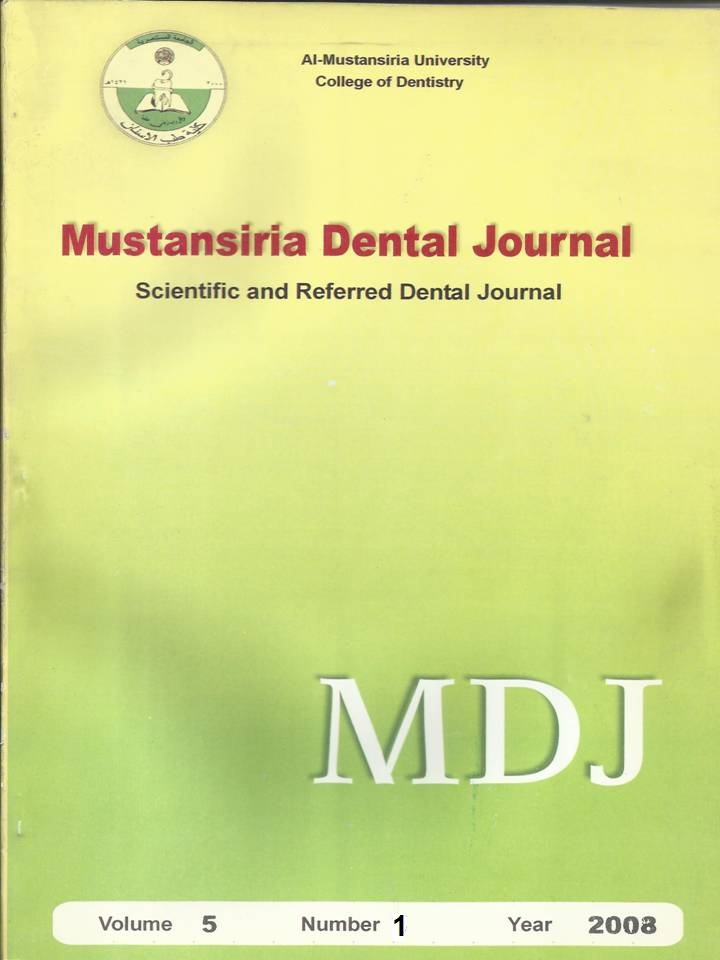Estimation of Erythromycin concentration In saliva of healthy volunteers
DOI:
https://doi.org/10.32828/mdj.v5i1.503Keywords:
Key word: bio-bioavailability of erythromycin – concentration of erythromycin in salivaAbstract
Erythromycin is an extensively used group of antibiotic medicines and dentistry. Clinical pharmacology for erythromycin in saliva was not clear until the time of this research. The evaluation was achieved by using suitable method (efficient, low cost, and reproducible). The purpose of this study is the determination of the erythromycin concentration in saliva.
Methods:Ten Subjects were given orally a single dose of 500 mg erythromycin very 6 hours. Samples 0.5 ml saliva was collected into centrifuge tubes at 0, 0.5, 1, 1.5, 2, 2.5, 3, 4, 6, 8, 12, and 24 hrs after dosing. Samples were centrifuged and the superannuated were injected to HPLC using USP-27 method of assays (2).
Results:The results of this study indicated that erythromycin concentration in saliva ranged from 0.11-0.29 μg. / mL. The other pharmacokinetic parameters are: the mean concentration of erythromycin C max 0.27±0.08 μg /ml, AUC 0-∞ 217.25±9.25 μg. h/ml, and Tmax. 7.28 ± 0.14 hr. and T 1/2 8.33±2.68 hr.
Conclusion:There was possibility to detection of erythromycin in saliva The HPLC method provided successful methods for monitoring the erythromycin with a detection limit reach 0.06 ng / ml. The analysis method is sensitive, reproducible, low cost and efficient for low concentration. The detection of erythromycin in saliva represents the distribution of the drug in saliva and indicated the suitability for erythromycin in treatments of dental and oral infections
Downloads
Published
Issue
Section
License
The Journal of Mustansiria Dental Journal is an open-access journal that all contents are free of charge. Articles of this journal are licensed under the terms of the Creative Commons Attribution International Public License CC-BY 4.0 (https://creativecommons.org/licenses/by/4.0/legalcode) that licensees are unrestrictly allowed to search, download, share, distribute, print, or link to the full texts of the articles, crawl them for indexing and reproduce any medium of the articles provided that they give the author(s) proper credits (citation). The journal allows the author(s) to retain the copyright of their published article.
Creative Commons-Attribution (BY)









